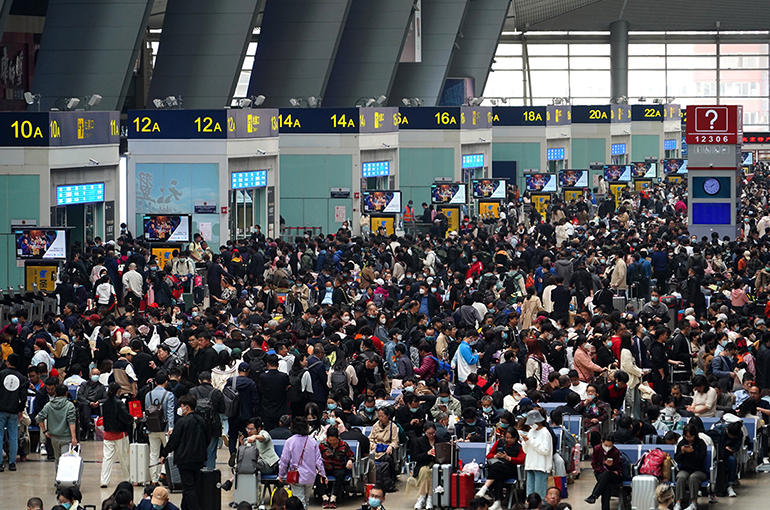 China’s May Day Holiday Travel Looks Set to Reach Record Levels
China’s May Day Holiday Travel Looks Set to Reach Record Levels(Yicai Global) April 28 -- With the five-day May Day holiday in China starting tomorrow, there has been an unprecedented surge in rail, air, and road passenger traffic.
China State Railway Group predicted a record passenger flow of 120 million rail journeys during the holiday which runs through May 3. That is an increase of 20 percent over the same period in 2019.
The busiest day is expected to be April 29, with 19 million passengers, up more than 10 percent from the previous record high, the state rail operator said.
Shanghai Railway has already seen its largest-ever single-day passenger flow this year and may have up to 650,000 passengers tomorrow, a new high.
More than 6 million people have already booked air tickets, and about 9 million passengers in total are expected to fly over the holiday period, per data from the Civil Aviation Administration.
That figure will surpass the pre-pandemic level, making it the busiest-ever May Day break for air travel. The number of flights yesterday also hit a single-day high for the year, reaching 14,389 and exceeding the number in the same period of 2019.
Fares are also rising, with Ctrip’s average one-way air ticket during the May Day holiday about 20 percent higher than during the Chinese New Year break, and Qunar’s average airfare is up 50 percent from the same period in 2019. Prices are highest for travel today and tomorrow.
In terms of taxis, the success rate of rush-hour departures on the evening of April 28 may be less than 50 percent, Li Min, vice president of ride-hailing services giant Didi Chuxing cautioned on Weibo, reminding people to try to spread out their travel over different times.
A report from internet giant Baidu predicted that road traffic during the May Day holiday will reach the highest level since the same period in 2019, peaking tomorrow morning.
The number of bookings on car rental platforms has also surged. Hello Chuxing’s car rental arm released May Day preview data saying that as of April 20, car rentals had risen more than five-fold from a year ago and were up more than 70 percent compared with the Chinese New Year holiday.
Editor: Tom Litting